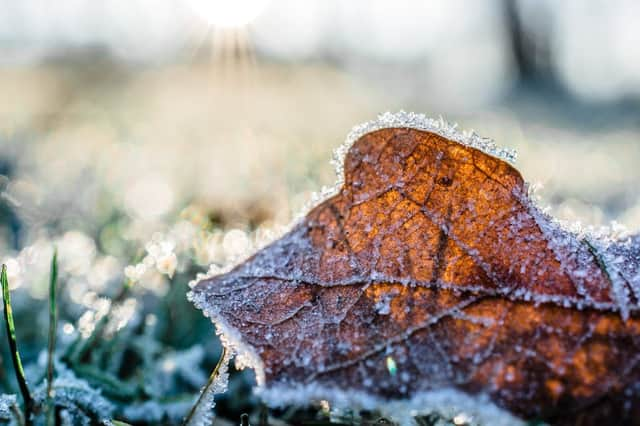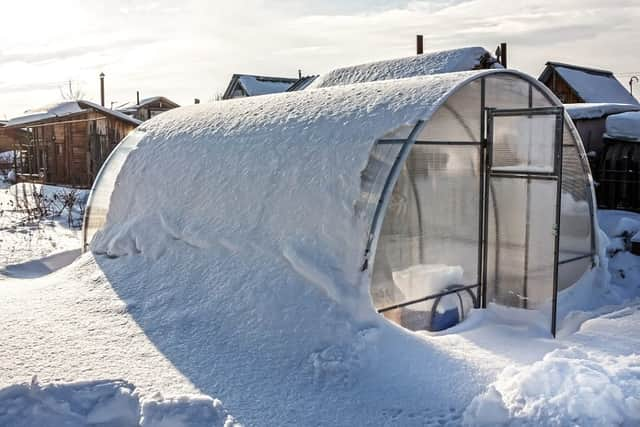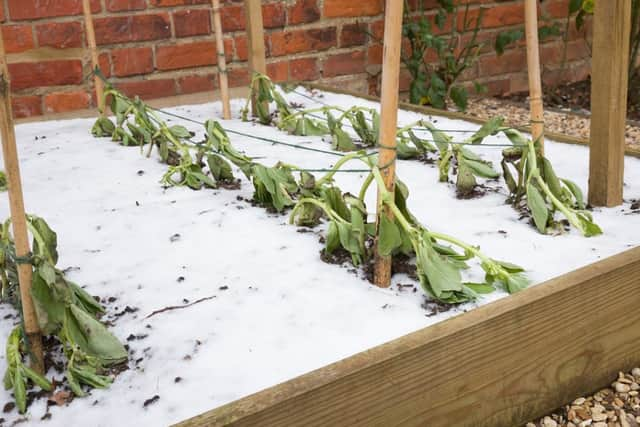Five tips for saving your garden from unexpected snow


Save your garden from unexpected snow flurries
Every child’s dream is every gardener’s nightmare – waking up to a blanket of white snow covering your garden.
Ideally, it’s best to put plant protection in place before any significant snowfall, but who hasn’t been caught off guard by the weather at some point?
Advertisement
Hide AdAdvertisement
Hide AdEvie Lane, Gardening Expert from Primrose said: "It’s important to note that a day of snow is not likely to do much harm to plants. In some cases, moderate snowfall can even act as insulation for your plants from low temperatures.
"The real danger with snow is the weight of it on your plants – especially if they’re small and newly planted. An inch or two of snow covering newly-planted veggies could mean you’ll have to replant your garden."
Dried Leaf Cover by Snow at Daytime
With parts of the UK experiencing snow yesterday, Primrose have provided 5 steps to save your plants after snowfall and minimise the lasting damage snow has on our gardens:
1. Remove Damaged Growth


Snow can be unforgiving to new growth, so act quickly to stop any winter damage from spreading. Once the threat of any more snow has passed, remove any unsightly damaged parts of your plants by cutting back to a healthy bud or side shoot. Pruning stimulates new growth and in most cases, the plant will fill back in.
2. Shake Snow off Your Trees


Advertisement
Hide AdAdvertisement
Hide AdLarge dumps of snow are heavy and can weigh down branches to the point of snapping.
Not only that, but frost or cold-damaged blossoms on fruit trees won’t grow any produce. Shake off any trees in your garden to prevent any damage.
3. Wipe Snow off Your Greenhouse


If you have access to a greenhouse, take a broom and remove the snow from the roof as it can prevent your beloved plants that you have moved inside for the winter from getting their daily dose of sunlight.
The weight and changing temperature of the snow can also cause cracks to appear in the glass.
4. Firm Plants Back in the Ground


Advertisement
Hide AdAdvertisement
Hide AdIf recently planted, severe frost can heave your snow out of the ground, exposing their vulnerable roots. Firm them back into the soil and add a smaller layer of compost to improve their drainage. An additional layer of compost will protect them should another frost return.
5. Stake Together Split Stems


You may be able to repair cracked and split stems, depending on how serious the winter damage is. Pull the split parts together and either tape them back together to give them their best chance of healing.
Once you’ve done all the post-snow repair tasks you can, the most important thing is to be patient. It will take some plants a bit longer to come out of their winter hibernation and some damage may show as we head further towards spring.